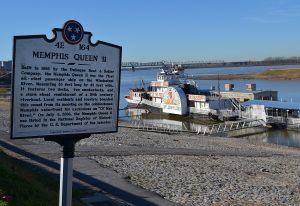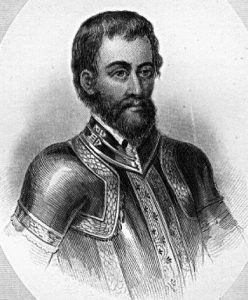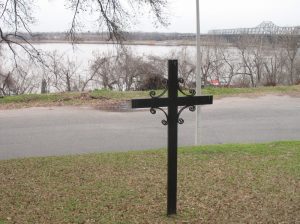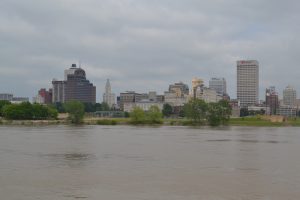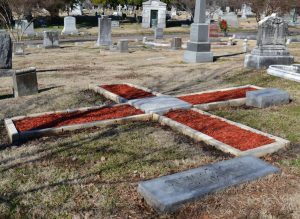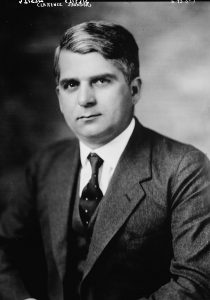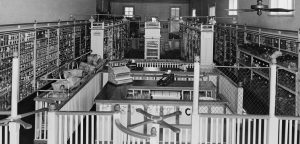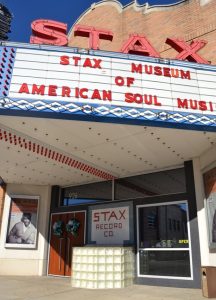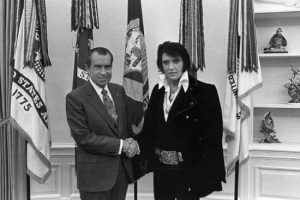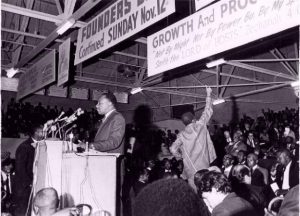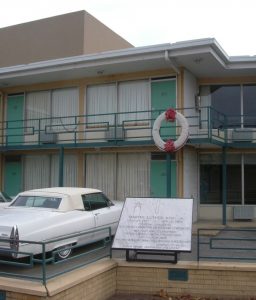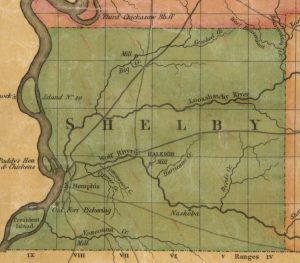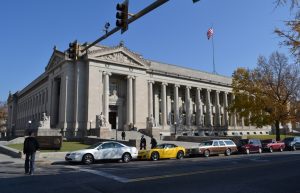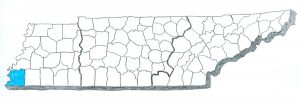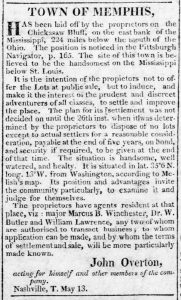With about 650,000 people, Memphis is the largest city in Tennessee. It comes up many times in the Tennessee social studies curriculum.
From de Soto to Martin Luther King, here are some of the more important points about the history of Memphis:
de Soto’s discovery
History books will tell you that on May 8, 1541, Hernando de Soto discovered the Mississippi River somewhere around the city of Memphis. However, we don’t know exactly where along the river this happened.
Keep in mind that Native American tribes in the area had been using the river for centuries. De Soto was not the first person to discover the river, but he is believed to have been the first European explorer to find it.
Today there is a park in Memphis called De Soto Park. The park contains a monument that says de Soto stood there to see the river, although no one really knows whether this is true or not.
Bluff City
Downtown Memphis originally sat on a bluff that overlooks the Mississippi River, which is why one of its nicknames is “Bluff City.” Much of the bluff has “smoothed” over the years, but you can still get a sense of what the bluff looked like at certain points in Memphis.
This land has contained human civilization many times throughout its history. First it was a Native American village called Chucalissa. Then it contained a French fort called Fort Assumption. Next came a Spanish fort called San Fernando de las Barrancas.
From about 1750 until 1820 there were a lot of disputes about who owned the land on which Memphis stands. Back then all of West Tennessee was generally considered Chickasaw territory, but that didn’t stop some Europeans from claiming they owned it.
In 1783, the government of the state of North Carolina “opened” what it claimed as its “western territory” to settlement, which means it started selling land that it claimed to own as far west as the Mississippi River. A man named John Rice bought 5,000 acres (what is now downtown Memphis) for 50 cents an acre.
Rice was killed in an attack by Native Americans. His brother later sold the land to Nashville lawyer John Overton for 10 cents an acre. Overton did nothing with the land until 1818, when the American government acquired the rights to all of what is now West Tennessee from the Chickasaw Indian Nation.
Overton then partnered with James Winchester and Andrew Jackson to develop a new city along the Mississippi River.. They sent surveyors to lay out a town and named it Memphis, after a city in ancient Egypt
Memphis’ rival
For many years, it wasn’t clear that Memphis would be the largest city in West Tennessee. About 40 miles upstream, where the Big Hatchee River poured into the Mississippi River, there was a town called Randolph. For a time, more cotton came through Randolph than came through Memphis.
Eventually, however, Memphis got the postal route, then the railroad line, and emerged as the larger and more prosperous place for farmers to sell cotton.
The former site of Randolph is now a ghost town. Click here for a virtual tour.
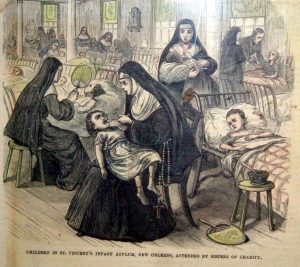 When Memphis died
When Memphis died
Today, when you get sick, you probably aren’t in any danger of dying.
But until about 80 years ago, doctors couldn’t really do much to help you when you were sick. Sometimes diseases spread and caused epidemics, in which thousands of people might die.
One of the worst epidemics in American history was the yellow fever epidemic of 1878.
In August 1878, doctors started reporting cases of yellow fever in Memphis. Among the symptoms of the disease were fevers, chills, a yellowing of the skin, and black vomit.
There had been yellow fever epidemics there before, and people were terrified of the disease. Within days over half of Memphis’s citizens fled the city. About 20,000 people remained, and about 14,000 of them were African Americans (many of whom didn’t leave because they didn’t have enough money to do so).
Churches became makeshift hospitals. People were dying at such a pace that survivors couldn’t bury the dead fast enough. Most other towns in the area declared a quarantine against Memphis, which meant that no one from Memphis was allowed to come to their city (for fear that the disease would spread).
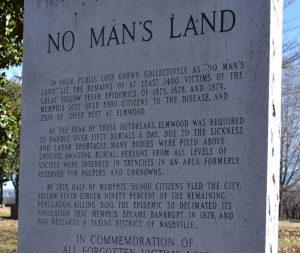
Thousands of yellow fever victims were buried in mass graves
at Elmwood Cemetery in Memphis near this marker
African Americans proved far more likely to survive yellow fever than white people. Less than 1,000 of the 14,000 blacks who stayed in Memphis died from the fever. But about 5,000 of the 6,000 whites who stayed in the city died.
The epidemic ended when the weather cooled off in October, but Memphis would never be the same. Many of the people who fled Memphis during the yellow fever never returned. The number of people who lived in Memphis would eventually start growing again in the 1880s. But you can imagine how nervous the words “yellow fever” would make them.
By the way: People didn’t know what caused yellow fever to spread back then. Today we know that the disease was spread by mosquitos.
Piggly Wiggly
The rise and fall of Piggly Wiggly is one of the most unusual American business stories of all time.
At the time most grocery stores were owned by the person who ran them (unlike today, when most are chain owned). Customers would walk in the door and give their lists to a clerk, who would retrieve their items. If the clerk had six people waiting, the customer had to wait for those in line to be served.
In the old days, most grocery stores extended credit to their customers, which means customers bought groceries with an IOU and then paid their bill at the end of the month or season.
In 1918, Clarence Saunders started a new grocery store chain called Piggly Wiggly. “It took me two hours to find a name that was ridiculous enough,” he later said. From its inception it was successful. Each store was identical, with each product in the same location in each store. The stores had one-way aisles to expedite traffic and create order. Piggly Wiggly advertised heavily. By 1922 there were 1,200 Piggly Wiggly locations in the United States, making it the largest grocery store chain in the country by far.
However, in 1923 Saunders lost control over Piggly Wiggly after a complicated series of events involving ownership of the company’s stock. Saunders went from being wealthy to being poor overnight. Saunders did not give up, however, and later started another grocery store chain that also became big. (It, however, went bankrupt during the Great Depression).
Today there are still some Piggly Wiggly stores throughout the South, but they aren’t controlled out of Memphis anymore. Meanwhile Saunders’ home, the Pink Palace, is a museum.
Rock, the blues and soul
It’s hard to explain how it was that Memphis became such a great place for music. The main thing to keep in mind is that the music and people who wrote and sang it generally came from outside of the city and then moved there to perform it to audiences in places like Beale Street and on radio stations.
It was in Memphis that people could make their living performing music.. and make their living they did.
Three of the most famous and important musical figures who made Memphis their home were W.C. Handy, B.B. King and Elvis Presley.
All three of these men have left huge imprints on Memphis. Handy is known as “the father of the blues.” King is probably the most famous musician associated with the Beale Street section of Memphis. Elvis Presley is known as the “king of rock n roll.”
Today Elvis Presley’s home, Graceland, is one of the top tourist attractions in the state of Tennessee.
The King Assassination
The assassination of Martin Luther King Jr. on April 4, 1968, is the most famous thing to have ever happened in Memphis.
Martin Luther King was in Memphis to show support for sanitation workers who had gone on strike a couple of months earlier. The strike started in February (which meant that trash collection stopped in February). By late March, it and the reaction to it had led to riots and the occupation of the city by 4,000 National Guardsmen.
These were tense times. On the night of April 3, King made his famous speech at Mason Temple, predicting that “I may not get there with you, but I want you to know tonight that we as a people will get to the promised land.”
The next day, while he was standing on the balcony of the Lorraine Motel, King was shot and killed by James Earl Ray. King’s assassination led to riots all over the United States. Click here to read an account of this tragic event from eyewitness Samuel Billy Kyles.
After King’s death, the city of Memphis (under pressure from President Lyndon Johnson) began working with the sanitation workers’ labor union.
The Lorraine Motel, where King was killed, is now the National Civil Rights Museum.
Finally, here is a tidbit that few people know today: originally, the county seat of Shelby County was not Memphis, but Raleigh, in the middle of the county (as you can see on this 1832 map). Memphis did not become the county seat of Shelby County until 1866.
Here’s a photo of the Shelby County Courthouse.
